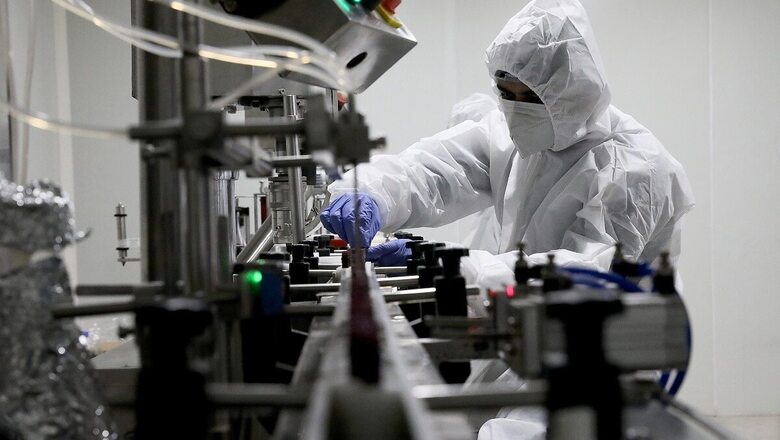
views
The R-number, or the effective transmission rate, has rapidly increased for the first time since the peak of the second wave of the Covid-19 pandemic in India, leaving medical professionals in worry.
The transmissibility rate that was steadily dropping until the last week of June has seen a sudden spike between June 20 and July 7 as the country witnesses massive crowds at multiple tourist and religious places.
The latest data on the R-value of Covid shows that it is up from 0.78 to 0.88 between May 15 and June 26. The analysis, led by Sitabhra Sinha at the Institute of Mathematical Sciences in Chennai, denotes that the decline in active cases has slowed down, the Indian Express reported.
ALSO READ | Why So Careless? Alarming Crowds at Hill Stations, Markets May Usher 3rd Wave Early
“R is defined in terms of the rate of growth or decline of active cases. The decline in active cases has slowed down considerably in the last few days, and that is getting reflected in the estimation of R as well,” Sinha told the IE.
This means that every group of 100 infected people is, on an average, now passing on the infection to another set of 88 people, instead of a group of 78 earlier.
What is R-Number
The R number is a way of rating coronavirus or any transmissible disease’s ability to spread. It is the number of people that one infected person will pass on a virus to, on average.
In case the R-value is higher than one, then the number of cases keeps increasing. However, if it is lower the disease will eventually stop spreading, because not enough new people are being infected to sustain the outbreak.
States with R-value One
In some relief, barring Kerala and Maharashtra, so far, states have reported an R-value below one.
In Kerala, the state contributing nearly a third of all new cases in the country’s caseload, currently, the R-number is estimated to be around 1.1. Maharashtra, too, has an estimated R-value of around 1, the analysis shows.
On Friday, Covid task force head V K Paul had said that the country is far from reaching the baseline of rate of decline, which should be around 10,000 cases daily as against the present 40,000 infections reported every day.
“This is a warning to us that we should help the process of decline of this wave effectively to a much lower level to the baseline. The baseline has not yet been achieved. The baseline would be something below 10,000. This should be for three weeks at least. More than 35,000 cases per day is not a small number… It looks small in comparison to the high peak that we experienced, but the fact that the rate of decline is somewhat slow, tells us that if we don’t work hard on controlling the virus, it can take the upper hand,” he said.
Meanwhile, Delhi and Mumbai have shown a massive turnaround. While 85% of hospital beds earlier reserved for Covid-19 patients are now empty, Delhi’s positivity rate has dropped below one per cent and it reported one death.
The national capital recorded 76 fresh Covid-19 cases on Saturday, while the city’s positivity rate slipped to 0.09 per cent. The Covid-19 positivity rate had dropped to 0.11 per cent on Friday from 0.12 per cent the day before.
Mumbai reported 600 new cases and 13 deaths on Friday; on Thursday, it had reported 540 infections and 13 fatalities.
The numbers are encouraging as, at one point, the country’s national capital and financial capital were both breaking records for the highest number of coronavirus infections reported in a single day. These numbers were higher than those logged even during the first wave last year.
Read all the Latest News, Breaking News and Coronavirus News here.




















Comments
0 comment